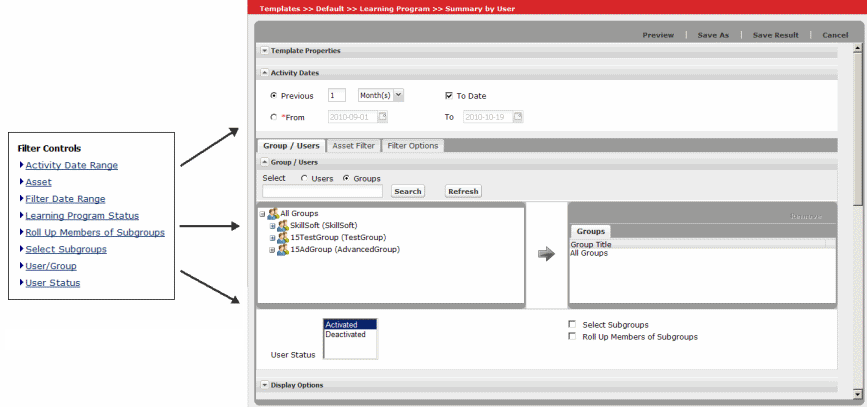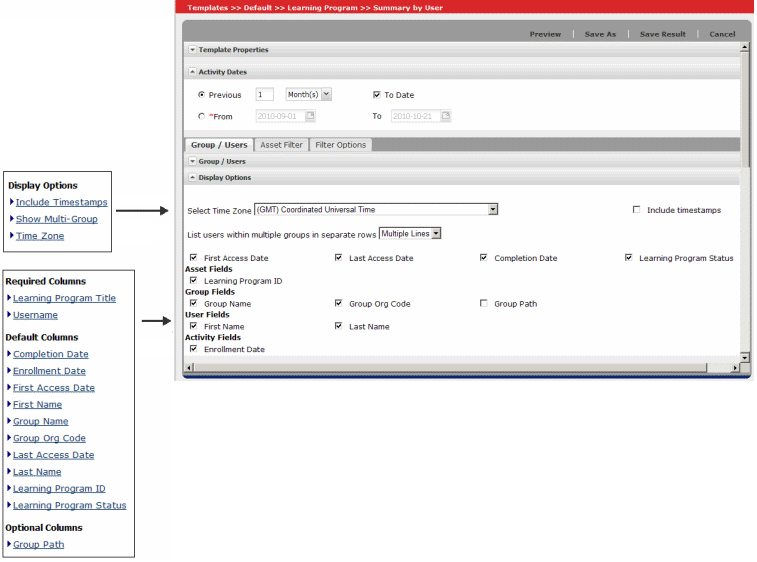Understanding a Report Definition
Each report definition in this section includes the following:
- The name of the default template that you can use to run the report
- A high-level description of the data contained in the report
- A list of the filter controls in the template
- A list of the display options in the template
- Lists of the required, default, and optional columns of data in the report
Filter Controls
In the Reporting interface, you use a template's filter controls to specify the data to include, for example, the organizational groups or types of assets on which to report.
Each report definition includes a list of the filter controls in the associated template, as shown in the following image.

In a report definition, click the name of any filter control to view its description and type.
For more information on working with filter controls, see Understanding Filters.
Display Options
In the Reporting interface, you use a template's display options to specify the following:
- How the data appears in the report
- The columns to include in the report
Each report definition includes a list of the display options in the associated template and the columns that can be included in the report. There are 3 types of columns:
- Required: Because these are required, they are not shown in the user interface.
- Default: These can be unchecked to omit them.
- Optional: These can be checked to include them.

In a report definition, click any display option or column name to view its description.
For more information on working with display options and columns, see Select Display Options.